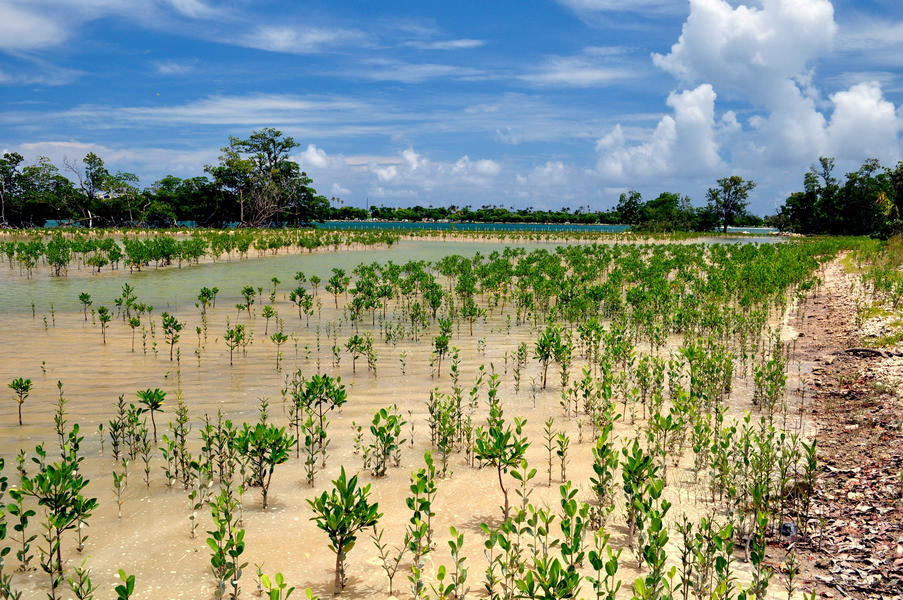The primary role of Biscayne Bay Aquatic Preserves' (BBAP) role in managing bay resources has been to work as an informed source on ecological issues and cultural resources within and adjacent to the aquatic preserves, by coordinating with other resource management agencies. BBAP works to oversee activities that could potentially affect its natural resources, to ensure all laws are obeyed and enforced, and to ensure accurate information is available for management planning decisions. Other responsibilities include informing the public on natural resource issues, through educational and outreach events, such as lectures or outdoor classroom activities.
Habitat Restoration and Enhancement
Habitat restoration includes removal of invasive plants such as Brazilian pepper, replanting native plants, spoil island restoration, shoreline stabilization, and debris removal.
Listed Species Protection
At least 173 species occurring in Biscayne Bay, its coastal wetlands or uplands, including barrier islands, can be found on a list of protected species (either federal or state listings). These include the Florida manatee, American crocodile, wood stork, hawksbill turtle, and the green sea turtle.
Permitting and Enforcement
- BBAP staff work with DEP's Southeast District office and DERM's permitting staff to conduct joint site visits when a summary of the biological resources in an area are relevant to the review of a coastal construction application.
- BBAP staff work closely with the lead FWC officer who responds to derelict vessels and have created a list of vessels that need to be removed in cases where the owner cannot be found and held accountable.
- BBAP staff work closely with municipal, local, state and federal officers through the Marine Advisory Support Team which meets monthly to discuss Biscayne Bay protection issues including human health and safety as well as natural resources are discussed.
- BBAP staff is currently working on training marine enforcement officers on the new seagrass protection law for seagrasses in aquatic preserves, including identifying new and old scars, how to identify seagrass species, where seagrasses are located and what areas of the bay can be patrolled because of the threat of repetitive propeller scar injury.
Mitigation
Impacts to natural resources must be avoided or minimized by applicants wishing to construct within the preserve (Chapter 18-20 F.A.C.; Chapter 18-18 F.A.C.;). Common impacts include damage to seagrasses, macroalgae, mudflats, listed species and other species and must be mitigated. In such situations, BBAP staff might work with regulatory staff to offer site-based recommendations for mitigation based on local knowledge and needs of the area that might include land acquisition, habitat and hydrologic restoration, water quality improvement projects, shoreline stabilization with native plants, planting of emergent and submerged vegetation, that would directly benefit the quality of natural resources within the aquatic preserve. BBAP staff continues to work with the DEP's Environmental Resource Permitting Program to minimize and avoid impacts to resources in the bay.
Incident Response
Most incidents in the aquatic preserve involve speeding vessels in the bay causing accidents, potential permit violations and environmental emergencies such as downed planes, sunken vessels and sea wall collapses. Depending on the reported incident, aquatic preserve staff coordinate with DEP, FWC, or SFWMD compliance and enforcement staff, or MDC Parks and Recreation Department. Maintaining a strong partnership with compliance and enforcement staff is critical to the success of incident response within the aquatic preserve. Aquatic preserve staff also encourage stewardship among homeowners, who often serve as the eyes and ears of the aquatic preserve.


